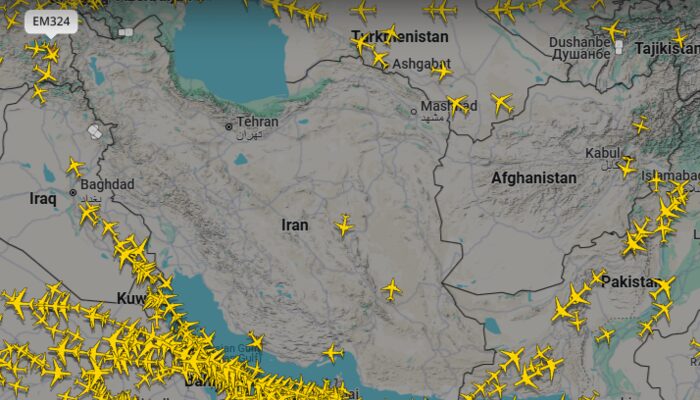TEHRAN – Iran has partially reopened its airspace following a 12-day military escalation with Israel, signaling a tentative return to calm after both sides agreed to a ceasefire. State media reported on Wednesday that the eastern half of the country is now open to international overflights, as well as domestic and international flights that either originate from or land in airports located in eastern Iran.
Majid Akhavan, a spokesperson for Iran’s Ministry of Transport, announced the update through the official IRNA news agency. “The airspace over the eastern half of the country has been reopened to international overflights as well as domestic and international flights solely with origin or destination in airports located in eastern Iran,” he said.
This marks the first step toward restoring full air connectivity in the country, which had been largely shut down amid fears of further escalation and retaliatory strikes.
Mashhad Airport Among Reopened Facilities
Among the airports reopening is Mashhad International Airport, which had previously been targeted by Israeli airstrikes during the brief but intense conflict. Despite damage reports, Iranian officials say the airport has resumed limited operations.
Other operational airports now include Chabahar, Zahedan, and Jask — key hubs in eastern and southeastern Iran. Flights in and out of these airports are expected to resume gradually, depending on security assessments and logistical readiness.
However, Akhavan clarified that the reopening does not apply to western regions of Iran or the capital, Tehran. “Domestic and international flights in other parts of Iran, including the capital Tehran, are not permitted until further notice,” he stated. Officials cited ongoing security reviews as the reason for the delay.
Airspace Restrictions Reflect Fragile Ceasefire
While the partial reopening is seen as a positive development, the continued closure of western airspace reflects the fragile nature of the ceasefire. Though active hostilities have stopped, tension remains high, especially in areas closer to Iran’s borders with Iraq and the Persian Gulf.
Security analysts say Iran’s move to limit flights in and out of Tehran suggests that authorities are still on high alert for any potential surprise attacks or renewed conflict. The Israeli government has remained largely silent about the ceasefire terms, while Iranian officials have emphasized that their military is prepared to respond to any further aggression.
International airlines have also responded cautiously. Some carriers are rerouting flights to avoid Iranian airspace altogether, citing insurance risks and safety protocols, while others are gradually testing limited routes through the eastern corridor.
The partial reopening signals a cautious return to normalcy in parts of Iran, but it also highlights the lingering uncertainty that follows high-stakes regional conflict. For now, the skies over eastern Iran are open — but the wider airspace remains a mirror of the fragile peace on the ground.
Follow us on Instagram, YouTube, Facebook,, X and TikTok for latest updates
